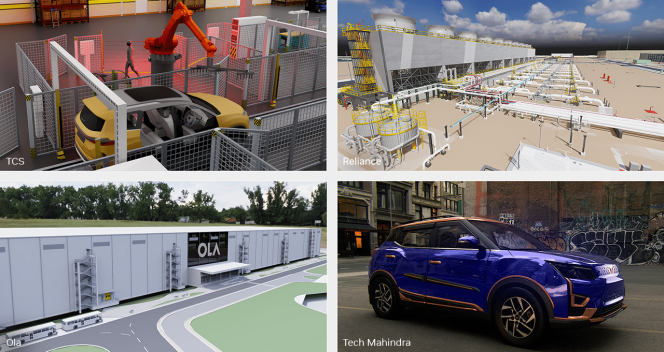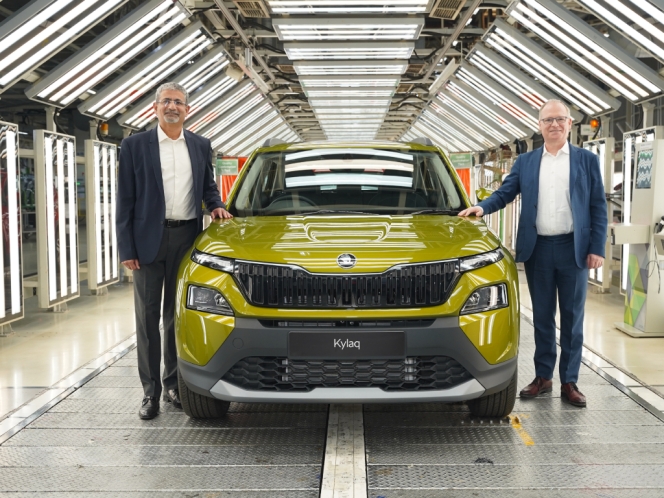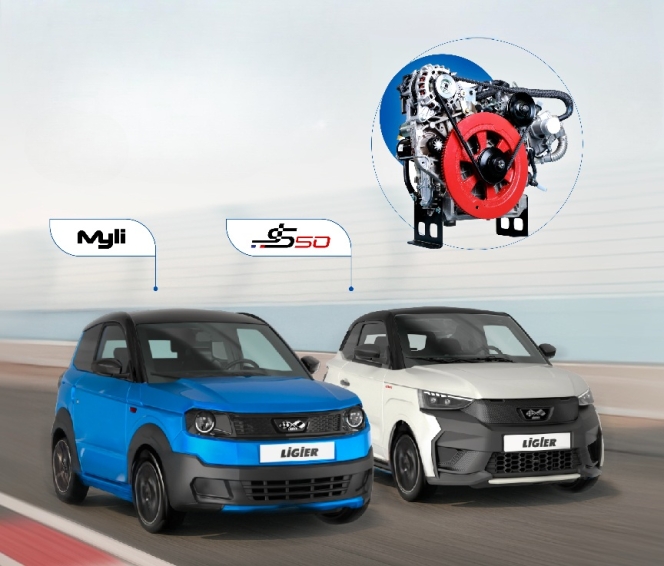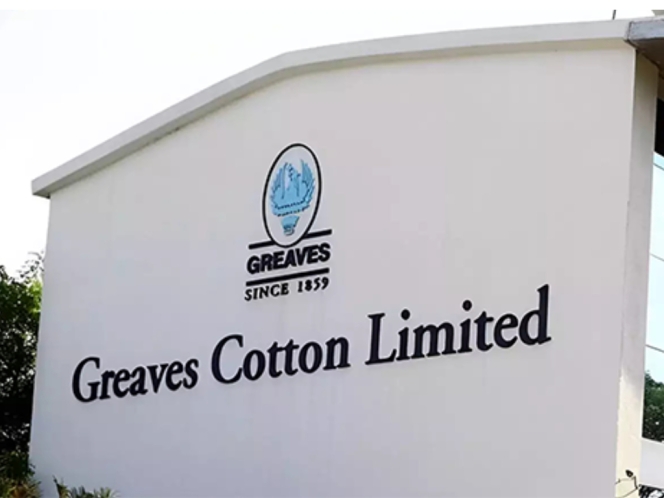- Qualcomm
- Nvidia
- AI
- Computing
- Ola Electric
- Tata Consultancy Services
- TechMahindra
- Automotive
- System-to-chip
- SoC
Qualcomm And Nvidia See Gain In Automotive Business
- By Bhushan Mhapralkar
- November 14, 2024

Introducing significant advancement in automotive semiconductor technology at the recent Snapdragon Summit 2024 with a focus on improving the cockpit and ADAS experience, Qualcomm has reported strong growth in its automotive revenue in the current calendar year.
The growth story at Nvidia – with a lucrative detour into AI – is indicative of the developments in autonomous vehicle technologies.
The tech major may not enjoy the popularity or acceptance that Qualcomm has come to command, the fact is, both are seeking an innovative approach to automobiles as their users seek new and exciting features.
While legacy automotive tier 1 suppliers like Schaeffler, Bosch and others facing the challenge of sluggish demand, the system-to-chip (SoC) technology companies like Qualcomm and Nvidia are engineering a different dimension to the art of automobile design, development and manufacture.
Enjoying an EBITDA margin of around 30 percent as compared to the five percent EBITDA margin roughly of tier 1 automotive suppliers, Qualcomm and Nvidia are driving the age of software defined vehicles that are already calling for engineers with a deeper understanding of software.
C++ or Autosar may be the language most automotive software programmes use as the basis, from a features or convenience point of view, even the presence of rain sensing wipers or an air-con that can be switched on or off with a voice command are fast gaining prominence among automotive buyers as they seek a different level of emotion connection with their set of wheels.
From a vehicle architecture point of view, please consider the Qualcomm’s Snapdragon Digital Chassis. It has evolved with the introduction of the Snapdragon Cockpit Elite and Snapdragon Ride Elite platforms on the hardware side.
Aiding faster computing speeds, both the platforms feature the Oryon CPU. This CPU has been optimised for automotive safety standards and designed for 3x faster CPU performance than previous generations, according to Qualcomm sources.
Aiding to enhance in-vehicle digital experiences by integrating advanced infotainment with autonomous driving capabilities on a single chip, developments like this mark an interesting milestone in the world of automobiles.
An important milestone will be the plan by Qualcomm to introduce lower-tier versions of these platforms to broaden their applications, enabling automakers to develop cost-effective solutions across various market segments.
The Cockpit Elite and Ride Elite SoCs are expected to be available to manufacturers starting in 2025, with early adopters such as Mercedes-Benz and Li Auto planning to integrate these technologies into their upcoming models.
The first vehicles using these platforms are expected to be available by 2026 in China. Releases in other markets in the world will soon follow.
Talking about Nvidia's lucrative detour into AI, Ola Electric has developed an Ola Digital Twin platform on NVIDIA Omniverse that is helping it to achieve 20 percent faster time-to-market – from design to commissioning for its manufacturing operations.
Built on NVIDIA Isaac Sim, the Ola Digital Twin platform taps into core Omniverse technologies like OpenUSD for data interoperability, RTX for physically-based rendering, and generative AI for accelerated world building to generate synthetic data or training autonomous mobile robots and robotic arms.
Consulting leaders such as Tata Consultancy Services (TCS) and Tech Mahindra are developing industrial AI applications and services on Omniverse to help manufacturers develop digital twins for accelerated factory planning, optimised processes, robotics training and large-scale automation, according to an industry source aware of the new developments in AI and industrial automation.
Edge AI and software virtualisation
At Snapdragon Summit 2024, Qualcomm emphasised the benefits of edge AI over traditional cloud-based solutions, particularly in terms of privacy and latency.
By processing data locally within the vehicle, edge AI enhances data security and ensures that sensitive information remains protected. Recent advancements in AI models, such as Llama 3.0, illustrate that edge AI can deliver strong performance while reducing memory requirements, which may lead to cost savings for manufacturers.
Interesting, use cases covering nearly every aspect of heavy manufacturing — from building virtual factories for real-time factory planning and monitoring, to creating digital twins of aircraft components for immersive training and predictive maintenance, Nvidia’s Omniverse is being used to simulate autonomous vehicles; to enable automotive companies to simulate and validate complex driving scenarios without the need for physical testing.
Image for representative purpose only
- Skoda Auto Volkswagen India
- Skoda
- Volkswagen
- Bentley
- Slavia
- Kylaq
- Kushaq
- Taigun
- Virtus
- MQB-A0-IN
- Piyush Arora
- Lamborghini
- Audi
Skoda Auto Volkswagen India Attains 2 Million Unit Production Milestone
- By MT Bureau
- November 21, 2025

Skoda Auto Volkswagen India (SAVWIPL), one of the leading passenger vehicle manufacturers, has attained a new production milestone of rolling out its 2 millionth unit in the country.
The milestone marks a pivotal moment in the company’s 25-year history in the country. This achievement follows the Group's strongest commercial performance, with October 2025 being its most successful month since the Group's formation. The total includes over 500,000 vehicles built on the MQB-A0-IN platform, which was developed in India by local engineering teams. This platform supports the Skoda Kushaq, Slavia, Kylaq and the Volkswagen Taigun and Virtus.
The last 500,000 units were produced in just 3.5 years, reflecting demand for India-built products.
Interestingly, Skoda Auto India recorded its highest-ever 10-month performance, more than doubling year-on-year to 61,607 units in 2025. Volkswagen India recorded its highest-ever monthly sales for the Virtus during Diwali, with the model holding over 40 percent share in the premium sedan segment in 40 months.
During the year, the Group’s premium and luxury brands also contributed to its market position:
- Bentley launched Bentley India, an operational division within SAVWIPL, accompanied by new showrooms in Mumbai and Bengaluru.
- Porsche India added over 4,400 customers over the past six years and expanded its footprint to 13 points of sale.
- Audi strengthened India’s EV ecosystem with over 6,500 charging points installed under Phase II of the segment-first Charge My Audi initiative. The Audi Approved: plus segment posted 5 percent growth between January and September 2025.
- Lamborghini delivered its best-ever annual performance in 2024, delivering 113 cars, a 10 percent increase over 2023. The launch of the Temerario in India completes Lamborghini’s hybrid transition in line with its Direzione Cor Tauri strategy.
Piyush Arora, CEO & Managing Director, Skoda Auto Volkswagen India, said, “Every milestone we achieve in India reflects our strong belief in the country’s potential – not just as a market but as a driving force in the future of mobility. The 2-million mark is the outcome of consistent investment in people, technology and local capability. It also speaks to the exceptional trust Indian customers place in our six brands. Indian buyers are among the most informed and discerning in the world. They evaluate every strength and every limitation before choosing a Volkswagen, Škoda, Audi, Porsche, Lamborghini or Bentley, and their confidence strengthens our resolve. This achievement highlights how closely we listen to our customers and how their evolving expectations shape the products we design and build here, with the same quality, precision and trust that define the Group worldwide.”
Going forward, exports will continue to remain a key pillar of the Group’s operations, with more than 700,000 vehicles shipped from India to markets across Latin America, Africa, Southeast Asia and the Middle East, strengthening India’s emergence as an export hub.
The Group operates facilities in Pune and Chhatrapati Sambhaji Nagar. The Pune plant was established with an investment of nearly €600 million to support higher volumes and deeper localisation.
Greaves Cotton Engines Power European Micromobility With Ligier Partnership
- By MT Bureau
- November 18, 2025

Greaves Cotton, an engineering firm, has partnered with Europe’s Ligier Group, a manufacturer of light and heavy quadricycles. The collaboration will see Greaves’ Euro V+ certified 499cc REVO D+ diesel engines powering Ligier’s JS50 and Myli microcar models.
The engines, designed and manufactured at Greaves' facility in Chhatrapati Sambhajinagar, India, are integrated into Ligier vehicles sold across multiple European countries, including France, Italy, Spain and Germany. This partnership highlights India's increasing role as a supplier of regulatory-compliant automotive technologies globally.
The 499cc REVO D+ single-cylinder, 4-stroke diesel engine features electronic fuel injection and is designed for the light quadricycle, L6e category of vehicles.
The engine produces 6.0 kW of power at 3000 rpm and 26 Nm of torque at 1800–2200 rpm. The engine is claimed to deliver superior fuel efficiency, exceptional Noise, Vibration & Harshness (NVH) performance, and low friction. The engines met the stringent Euro V+ compliance norms through rigorous European-grade quality assurance, including cold-weather validation and lifecycle reliability assessments.
Parag Satpute, Managing Director and Group CEO, Greaves Cotton, said, “This partnership with Ligier is a proud milestone for Greaves Cotton, showcasing how a Made-in-India powertrain is driving European mobility solutions. It reflects our strong engineering capabilities, customer-centric approach, and commitment to delivering global quality standards from our Chhatrapati Sambhajinagar plant. As a trusted partner to OEMs worldwide, we continue to strengthen our comprehensive solutions driven approach that meet the demands of global OEMs for highest standards of performance, efficiency, and sustainability.”
Christian Dujardin, CEO, Ligier Group, said, “Our partnership with Greaves has been marked by outstanding collaboration and mutual trust. Together, we have succeeded in bringing to market the new 499cc REVO D+ engine - a modern, efficient, and reliable powertrain that perfectly meets today’s market expectations, regulatory standards, and customer demands. We are proud of the quality and fluidity of our exchanges throughout this project, which have allowed us to combine innovation and performance. Our teams continue to work hand in hand on future developments to stay one step ahead of the competition and uphold Ligier’s promise of always being at the forefront of innovation.”
Vedanta Aluminium Secures Patent For Lead-Free Alloy
- By MT Bureau
- November 05, 2025

Vedanta Aluminium, India’s largest producer of aluminium, has achieved another milestone with the grant of its first product development patent for a lead- and tin-free bismuth-aluminium alloy. This innovation offers a sustainable, high-machinability solution designed to address the global phaseout of hazardous elements like lead and tin in industrial applications.
The alloy, developed by Vedanta Aluminium’s in-house R&D team, replaces lead and tin with bismuth. The company states that the alloy meets global environmental standards while delivering machinability and mechanical strength.
The alloy is engineered for components across the automotive, electronics and textile sectors where machining operations are central to production. Applications include automotive parts such as hydraulic manifolds and drive shafts and electronic components like mobile phone housings.
The innovation was driven by customer demand for sustainable alternatives to traditional machinable alloys (like AA6262 and AA6020) that contain restricted elements. These alloys are currently under regulatory scrutiny.
Lab trials of the new alloy demonstrated performance metrics compared to conventional grades:
- Strength and Durability: 8 percent higher tensile strength, 21 percent higher yield strength and 17 percent greater hardness.
- Machinability: Smaller, easily breakable chip formation enhances cutting efficiency and reduces operational time.
- Tool Life and Surface Finish: Up to 30 percent smoother surface finish and extended tool lifespan.
Rajiv Kumar, CEO, Vedanta Aluminium, said, “Innovation and sustainability are at the heart of Vedanta Aluminium’s R&D efforts, driving us to create solutions that advance our environmental goals while delivering world-class breakthrough products. This patent validates our efforts at pushing the boundaries of material science, while embedding sustainability into every stage of our value chain. The bismuth-aluminium alloy represents the future of responsible manufacturing.”
Image for representational purposes only.
Greaves Cotton Reports INR 6.32 Million Net Profit For Q2 FY2026
- By MT Bureau
- November 04, 2025

Mumbai-headquartered engineering major Greaves Cotton has reported its financial results for Q2 FY2026 with revenue of INR 8.15 billion, up 16 percent YoY, as compared to INR 7.05 billion last year.
The profit after tax grew by 140 percent YoY to INR 6.32 million, as against a loss of INR 14.33 million, showing improved profitability across its businesses.
The company reported that its Engineering Business grew 31 percent YoY in Q2 FY2026 and 30 percent YoY in H1 FY2026. The Automotive business grew by 48 percent YoY, driven by demand for Euro V+ compliant diesel engines from its European automotive OEM partnership.
Parag Satpute, MD and Group CEO, Greaves Cotton, said, “Greaves Cotton’s performance in Q2 FY2026 reflects the continued strength, agility and resilience of our business portfolio. Our core Engineering business has achieved strong growth. This has been driven by our customer-centric approach of developing products in close partnership with our customers, improved profitability, & is supported by efficiency enhancements that have strengthened our margins. We remain steadfast in our focus on disciplined execution, operational excellence and prudent capital allocation to drive sustainable value creation. Greaves continues to make a meaningful impact across Genset Solutions, Automotive and Industrial sectors through its diverse engineering portfolio, positioning us as a reliable partner in the application engineering space.”






Comments (0)
ADD COMMENT